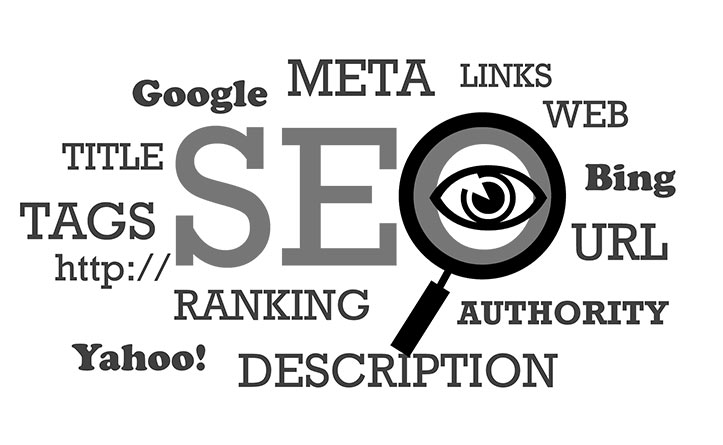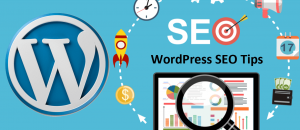Top 7 SEO Practices for WordPress Websites

WordPress is one of the most flexible open source Content Management Systems (CMS) in the world.
Its rich functionality, low barrier to entry, and unbeatable price tag (you can’t get it cheaper than free, can you?) have all led to its rank as the web’s most popular CMS.
So it’s no surprise that WordPress has been downloaded more than 32.6 million times or that it powers 40% of all websites.
WordPress is also SEO-friendly, to the point where even non-techies can easily implement some simple optimization techniques. This is great news for small local businesses which may not have the budget for sweeping SEO improvements, but still want to rank better in local search.
In this article, we will show you seven simple SEO improvements you can make to boost the local search ranking of your WordPress site

-
Optimize Your Content
Your content offerings are the most important assets on your website. Having a great site structure, lightning-fast load times, and tons of security measures won’t help you if your content isn’t up to par. So, before you can think about optimizing your content, you need to start with something your audience finds valuable. To do this, you’ll need to understand your audience’s pain points and know how your products solve their problems. Once you understand this, you can turn your solutions into all sorts of compelling content, from videos to blog posts to infographics, which keep them coming back for more.
Once you have great content, the next step can seem a little daunting: on-page optimization. Fortunately, we can enlist the help of some basic tools like the Yoast SEO plugin. While normally you’d need to consider up to 20 different SEO factors for each landing page, Yoast SEO simplifies your job by giving each page a color-coded score that will help you track your on-page optimization and pointing out areas for improvement.
Yoast SEO also points out some important on-page factors such as word count and keyword occurrences.
-
Review Your Link Profile
We know from recent studies that links are still the #1 most important ranking signal when it comes to localized organic rankings.
The number of domains linking to your site, the quality of your backlinks, and the optimization of your link anchor text are all strongly correlated to your local ranking.
Good organic link building takes time to cultivate, but here are a few simple steps you can start with:
Focus on Quality Over Quantity
The number of domains, IPs, and C-blocks linking to your site is important, but one high-quality backlink from an industry leader in your niche is worth far more than dozens of irrelevant, low-quality links. Use link tracking software to find and eliminate low-quality links.
Find & Fix Broken Links
Use a plugin such as Broken Link Checker to identify and correct broken links. This plugin checks posts, pages, and even comments for broken links.
Optimize Anchor Text
Optimize some of your anchor text for local search by including your city’s name. Just be careful not to over-optimize (e.g., changing all of your anchor text, too many exact matches, etc.).
Identify Potential Link Building Opportunities
Use a competitive analysis tool to find potential link-building opportunities, such as relevant sites in your industry that link to your competitors but not you.
-
Speed up Your Website
The tortoise may beat the hare in children’s tales, but you can’t say the same in the SEO world. Site speed remains one of Google’s most important “technical” ranking factors, and if you want to beat out your competitors in local search, then you’ll need to make sure that your site is as fast as possible. Possible techniques include:
Compressing Large Images
Large image files are the biggest offender when it comes to slow websites. Use a plugin like WP Smush to compress and optimize your images.
Clean up Your WordPress Theme
Get rid of outdated page elements (e.g., unnecessary database calls, functions, JavaScript, etc.). And make sure you delete old themes – hackers may use these to infiltrate your site.
Reduce Server Load With a Caching Plugin
Caching plugins create state HTML versions of dynamic pages which significantly reduce server load times. There are several options for you to consider, including free options such as WP Super Cache and W3 Total Cache, and paid options such as WP Rocket.
Don’t Go Too Plugin-Crazy
You can find a plugin for practically any function, but try to stick to essential plugins that provide real value to your site. Too many plugins will slow your site down.
Alternatively, you could make your life easier by investing in website auditing software. Quality products will analyze your on-page speed factors for you and suggest ways to speed your site up.
-
Optimize for Mobile
A lot of your potential customers are looking for local businesses via mobile. This, coupled with the fact that Google indexes mobile sites preferentially to their desktop counterparts, means that mobile optimization is more important than ever. The best thing you can do to improve your mobile site is to focus on page speed and image compression, but here are a few other tips and tricks:
Use a Responsive Theme
At the very least, you should make sure your WordPress theme is responsive and fits your content to all mobile devices.
Design Specifically for Mobile Visitors
Use the built-in function to detect different devices on the server level and create custom experiences for your mobile visitors.
Launch a Mobile App
According to an eMarketer study, 88% of mobile media time is spent on apps. Mobile users like apps that give them a comprehensive way to engage with their favorite brands.
Create Accelerated Mobile Pages
Accelerated Mobile Pages (AMP) are incredibly fast pages designed specifically for mobile. WordPress comes with a default AMP plugin you can use to create AMP pages that are listed at the top of SERPs when users search from mobile devices.
-
Integrate Google My Business Into Your WordPress Site
Google My Business bundles together a number of key factors related to local rankings. Signals such as physical proximity, user reviews, and business descriptions and categories will all impact your position in SERPs. Once you’ve claimed your GMB page, make sure you add your WordPress site to your profile, plus other key information, such as hours of operation and a description of your business. Then look for plugins and widgets that will let you transfer key ranking signals such as photos, a business map, and customer reviews from your GMB page to your website. You should also install a plugin that lets you add your GMB review to your WordPress site, such as the Google Places Reviews plugin. These will help increase consumer trust in your business! You may also want to consider putting an intractable business map on your website via a plugin or widget. Google Maps Builder is one example that will help your customers find you.
-
Add Structured Data to Your Page
Ever wonder why some local business listings seem so rich – including reviews, star ratings, and robust descriptions – while others fall flat? The difference is structured data.
Using plugins like Schema, you can feed Google additional information about your business. This will give your customers more detail when they find you in SERPs, including useful tidbits such as hours of operation, price range, and physical location.
Note that while descriptions don’t inherently improve your web ranking, including more information does encourage higher click-through rates – and CTR can impact ranking on Google and other search engines.
-
Include Location Keywords in Your URLs
Generally speaking, URL structure plays a minor role in your page’s ability to rank.
When it comes to local search, however, including location keywords in your URL can help improve the user experience.
This is especially true if you have multiple landing pages targeting different locations and you want to assure your customers that they’re in the right place.
Previous versions of WordPress didn’t give you a lot of flexibility when it came to your URLs. They were all “ugly permalinks,” which looked something like this:
http://mydomain.com/?p=1354.
However, the latest versions of WordPress default to “pretty permalinks,” which include the date and name of your posts. They might look like this:
http://mydomain.com/2016/02/28/sample-post/.
You can adjust your URL settings in your WordPress Admin panel by going to Settings > Permalinks. From there, you can click Custom Structure to add a location to your landing page URLs.
If you want to take your SEO game even further, you can make more improvements to your WordPress site beyond what we’ve suggested here by manually creating robots.txt files, generating XML sitemaps, optimizing your site structure, and more.


